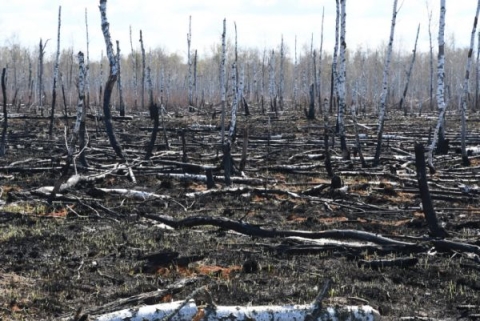

25 August 2020
2 min read
A new project, involving Professor Jim Smith, will investigate the impact of this year’s wildfires on wildlife in the Chernobyl Exclusion Zone.
The 2,600 km2 Ukrainian exclusion zone was created when people and farm animals were evacuated following the explosion at the Chernobyl nuclear plant in April 1986. The Chernobyl disaster remains the world’s worst nuclear accident and the exclusion zone is the most radioactively contaminated ecosystem on earth. Yet it has become a haven for wildlife in the absence of humans.
This new project will allow us to study the consequences of fires in the area, which represent the biggest threat to wild species.
Professor Jim Smith, Professor of Environmental Science
An area of more than 500 km2 within the Ukrainian exclusion zone was affected by severe fires in April this year. The new study, led by the UK Centre for Ecology & Hydrology (UKCEH), will assess the effect the fires have had on the diversity and abundance of mammals and birds, as well as soil function. It will also examine the impact of the fires on the mobility of radionuclides (or radioactive elements) and the risk posed to firefighters and the general population by the inhalation of contaminated smoke.
The year-long project, Chernobyl – a Radioactive Ecosystem on Fire (CHAR), is being funded by an Urgency Grant from the Natural Environment Research Council (NERC), part of UK Research and Innovation.
Jim Smith, Professor of Environmental Science in the School of the Environment, Geography and Geosciences, is involved in the project. He has been carrying out research in the Chernobyl Exclusion Zone (CEZ) for nearly 30 years. Professor Smith said: “The huge area evacuated after the Chernobyl accident now represents one of the most important wildlife reserves in Europe. This new project will allow us to study the consequences of fires in the area, which represent the biggest threat to wild species.”
The project also involves researchers from the University of Salford as well as from Belgium and Norway. The fieldwork for the study is being undertaken by Ukrainian collaborators, who will be complying with the national government’s COVID-19 guidelines.
